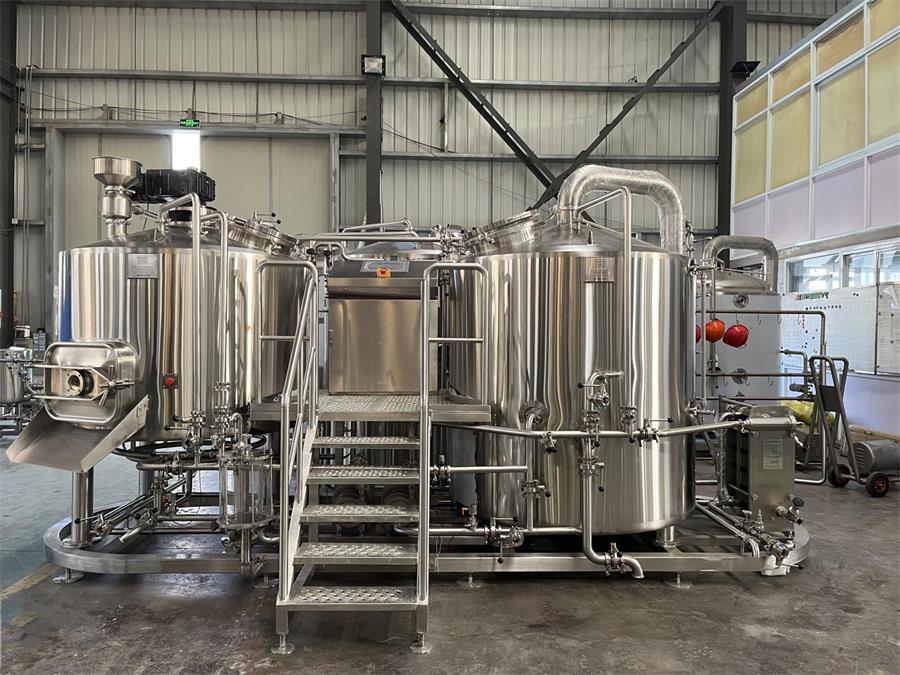How to Set Up a Beer Manufacturing Plant
Beer is one of the oldest and most beloved beverages in the world, with a rich history dating back thousands of years. Today, beer production has evolved into a massive industry, ranging from small craft breweries to large-scale commercial plants. Setting up a beer manufacturing plant requires a thorough understanding of brewing processes, equipment, investment requirements, legal compliance, and distribution strategies.
Large Commercial Breweries vs. Craft Breweries
Beer manufacturing broadly falls into two categories: large commercial breweries and craft breweries.
Large Commercial Breweries
These breweries produce beer on a massive scale, often exceeding millions of barrels annually. They prioritize efficiency, consistency, and cost-effectiveness. Large commercial breweries often have state-of-the-art equipment and rely on automated systems for brewing, bottling, and packaging. Major brands such as Budweiser, Heineken, and Coors operate on this scale.
Craft Breweries
Craft breweries, on the other hand, focus on small-batch production with unique flavors and traditional brewing techniques. They emphasize quality and creativity over mass production. Craft breweries typically produce less than 6 million barrels per year and tend to have a strong local or niche market appeal. Examples include Sierra Nevada, Stone Brewing, and Dogfish Head.
Each model has its pros and cons. Large breweries benefit from economies of scale but lack the flexibility of craft brewers, who can quickly adapt to consumer trends and experiment with new flavors.
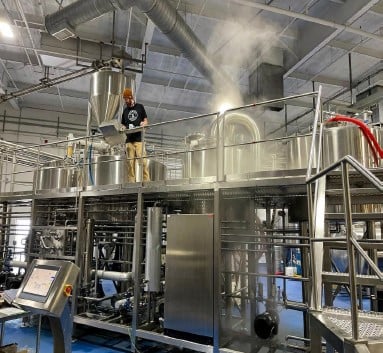
The Beer Production Process
Beer manufacturing follows a systematic process that transforms raw ingredients into the final product. The key steps include:
- Malting – Barley grains are soaked, germinated, and dried to develop fermentable sugars.
- Mashing – The malted barley is mixed with hot water to extract sugars, creating a sweet liquid known as wort.
- Boiling – The wort is boiled, and hops are added for bitterness and aroma.
- Fermentation – Yeast is introduced to convert sugars into alcohol, a process that can take several days to weeks.
- Conditioning – The beer is aged to enhance flavor and carbonation.
- Filtration & Packaging – The final product is filtered, carbonated (if necessary), and packaged in bottles, cans, or kegs.
Each stage requires precise control to maintain quality and consistency.
Essential Equipment for a Beer Manufacturing Plant
Setting up a brewery requires a variety of specialized equipment. Here are the most essential components:
- Milling System – Crushes malted barley to extract sugars.
- Mash Tun – Mixes malt with hot water for sugar extraction.
- Lauter Tun – Separates solid grains from the liquid wort.
- Brew Kettle – Boils the wort and integrates hops.
- Fermentation Tanks – House the fermentation process where yeast converts sugars into alcohol.
- Conditioning Tanks – Used for aging and refining the beer’s taste.
- Filtration System – Removes unwanted particles and ensures clarity.
- Cooling System – Regulates temperature during brewing and fermentation.
- Packaging Line – Includes bottling, canning, and kegging machines.
Costs & Investment: How Much Does It Take to Start?
The cost of setting up a beer manufacturing plant varies based on size, location, and scale of production. Here’s a breakdown:
| Expense Category | Small-Scale Craft Brewery ($) | Mid-Size Brewery ($) | Large Commercial Brewery ($) |
|---|---|---|---|
| Equipment | 100,000 – 500,000 | 500,000 – 2M | 5M – 20M |
| Facility & Setup | 50,000 – 300,000 | 300,000 – 1M | 2M – 10M |
| Licensing & Permits | 10,000 – 50,000 | 50,000 – 200,000 | 500,000 – 1M |
| Raw Materials | 10,000 – 50,000 | 50,000 – 200,000 | 500,000 – 2M |
| Marketing & Distribution | 20,000 – 100,000 | 100,000 – 500,000 | 1M – 5M |
| Total Estimated Cost | 200,000 – 1M | 1M – 5M | 10M – 50M |
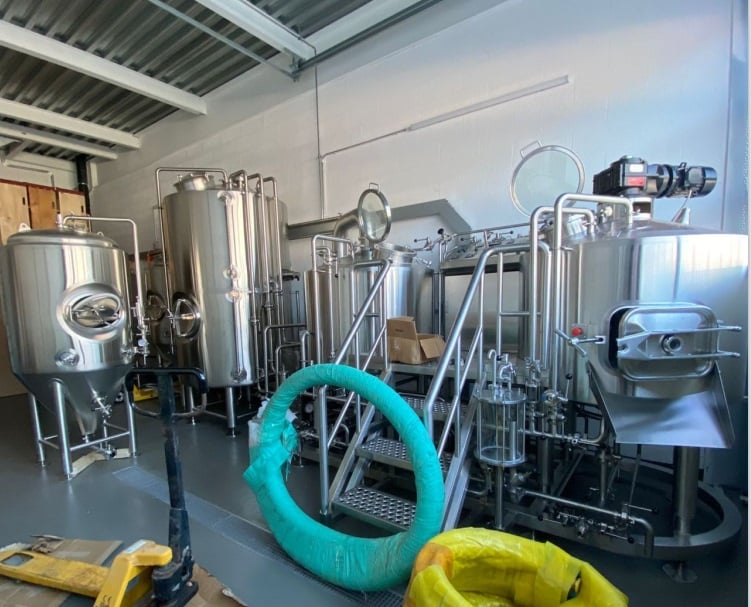
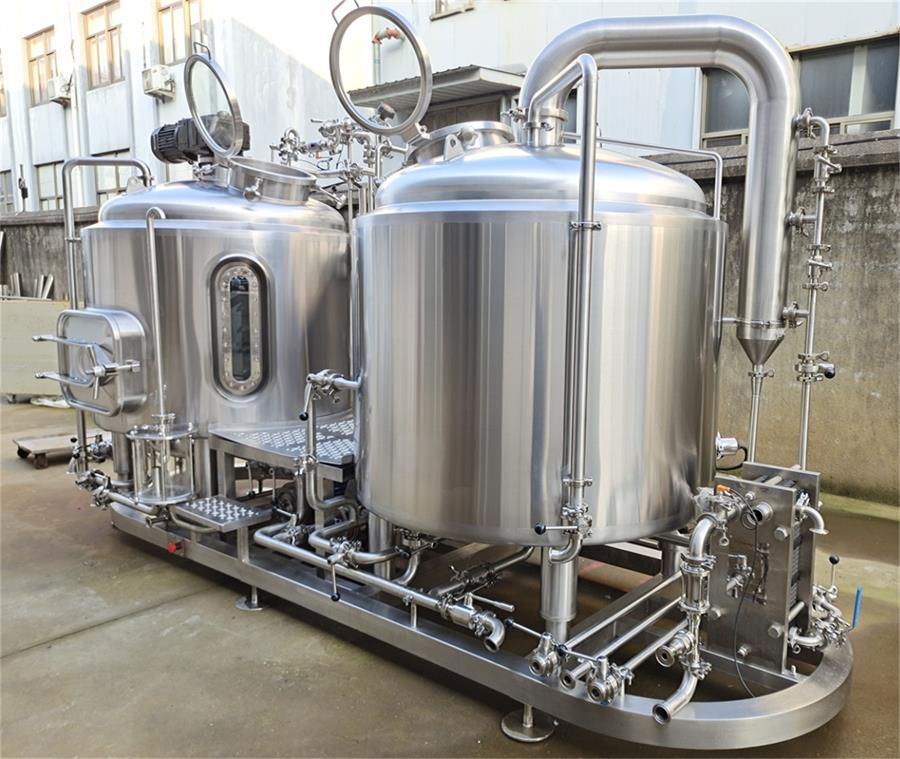

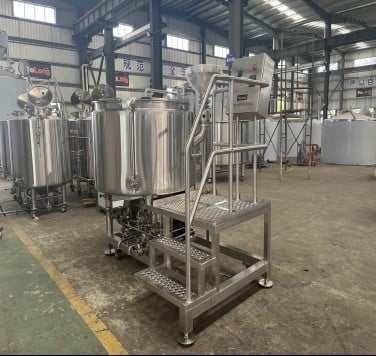
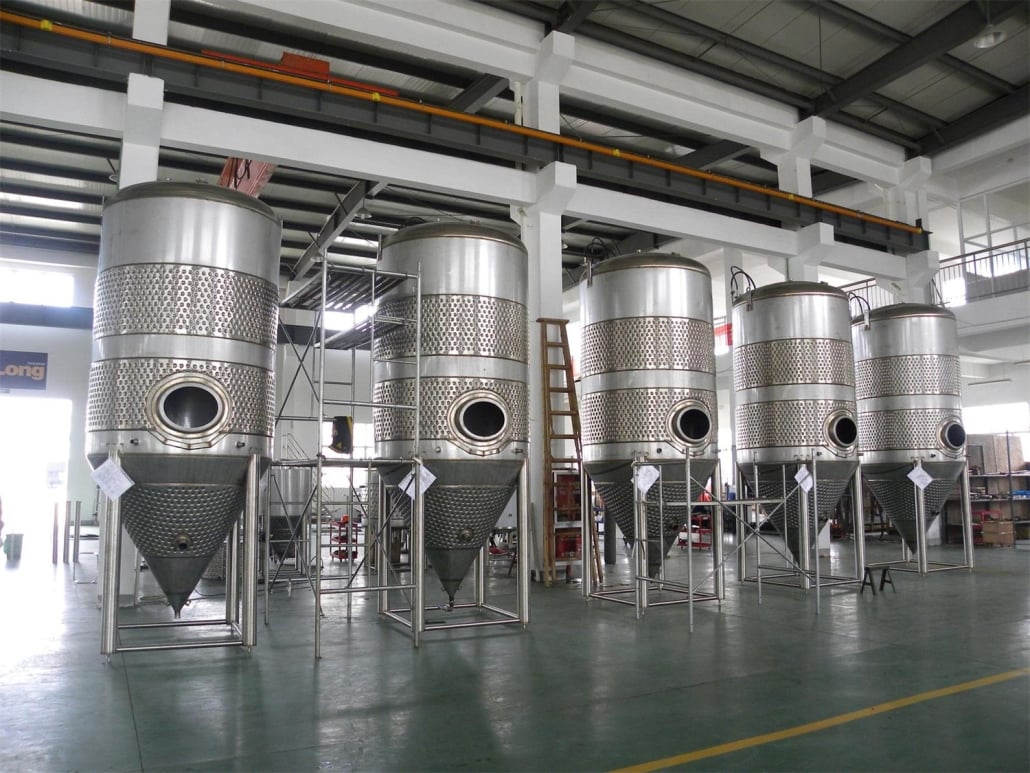
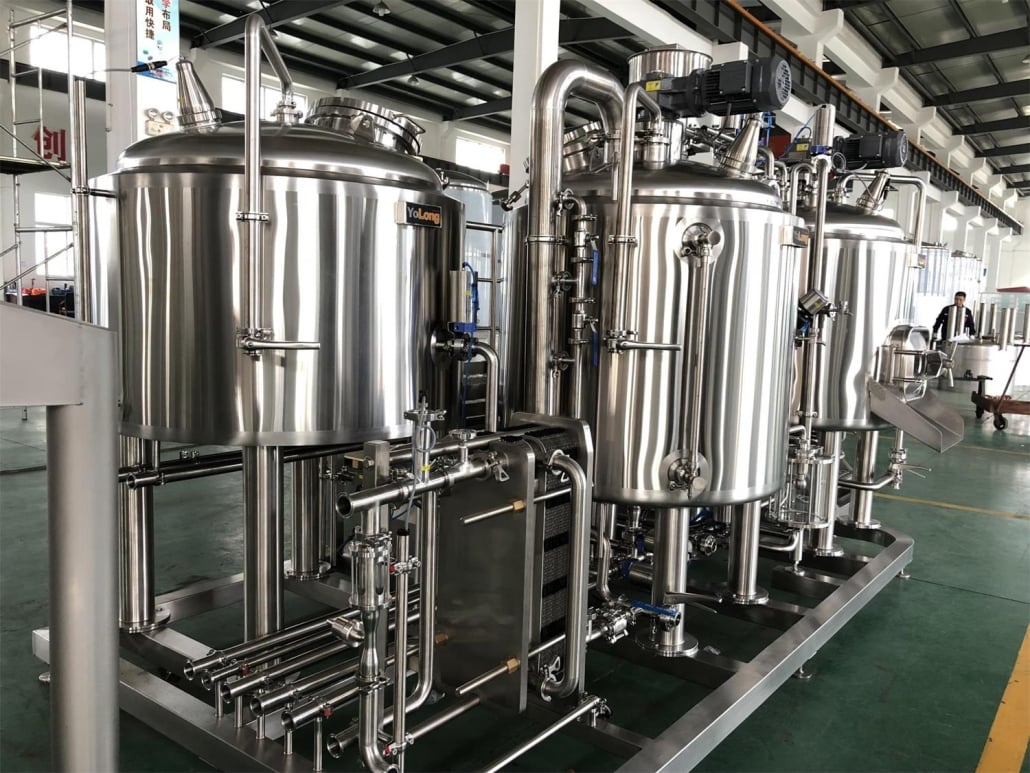
Legal & Licensing Requirements
To operate a beer manufacturing plant, you must comply with local, state, and federal regulations. Key legal requirements include:
- Brewery License – Required for production and sales.
- Alcohol Tax and Trade Bureau (TTB) Permit – Mandatory in the U.S.
- State Alcohol License – Varies by state and region.
- Environmental Regulations – Compliance with waste disposal and water usage policies.
- Health and Safety Standards – Includes hygiene, fire safety, and labor laws.
Marketing & Distribution
| Strategy | Details |
|---|---|
| Local Taprooms | Selling directly from the brewery boosts profit margins. |
| Retail Sales | Partnering with liquor stores expands reach. |
| Online Sales | E-commerce sales, where legal, enhance accessibility. |
| Bars & Restaurants | Draft sales increase brand visibility. |
| Festivals & Events | Beer festivals introduce products to new consumers. |
Future Trends in Beer Manufacturing
The beer industry is continuously evolving. Key trends shaping the future include:
- Sustainable Brewing – Breweries are adopting eco-friendly practices like water conservation and solar energy.
- Non-Alcoholic Beers – Rising health consciousness is driving demand for alcohol-free options.
- Innovative Flavors – Experimental ingredients such as exotic fruits, spices, and CBD-infused beers are gaining traction.
- Smart Brewing Technology – Automation and AI-driven analytics enhance efficiency and quality control.

FAQ
| Question | Answer |
|---|---|
| How much does it cost to start a brewery? | Costs range from $200,000 for small craft breweries to $50M for large commercial plants. |
| What licenses do I need? | A brewery license, TTB permit, and state alcohol license are required. |
| How long does it take to brew beer? | The brewing process typically takes 2-6 weeks. |
| What’s the profit margin on beer? | Margins vary but are usually 30-50% depending on scale and distribution. |
| Can I sell beer online? | Online sales depend on local laws and shipping regulations. |
Additional FAQs About Beer Manufacturing (2025)
1) What production scale should I target for year one?
Back into capacity from sales. Estimate monthly on-premise and distribution demand, then size brewhouse and cellar to deliver 1.2–1.4× that volume for seasonality and downtime.
2) Is a canning line necessary at launch?
Not usually. Start with mobile/contract packaging until you regularly package ≥3–4 days/month. Set DO specs (≤40 ppb), seam tolerances, and minimums in the contract.
3) Which utilities are non-negotiable for a beer manufacturing plant?
Three-phase power, sufficient gas/steam, sloped floor drains, potable water with adequate flow/pressure, make‑up air/ventilation, dry oil‑free compressed air, and a glycol chiller sized for peak load.
4) How should I plan QA on a startup budget?
Implement a minimal lab: pH meter, hydrometer or density meter, microscope/hemocytometer, ATP swabs, DO meter for cold side, and CO2 verification. Build SOPs and batch records from day one.
5) What are common permitting pitfalls?
Underestimating wastewater pretreatment needs, missing fire code requirements for CO2 storage, and delayed TTB/State ABC submissions due to incomplete floor plans and equipment specs.
2025 Industry Trends for Beer Manufacturing
- Modular, skid-mounted brewhouses and pre-tested cellars accelerate install-to-first-brew timelines.
- Low-oxygen practices standardize across craft: closed transfers, inline DO at brite, CO2-purged dry hop additions.
- Sustainability ROI improves: heat recovery to HLT, VFD pumps, efficient CIP, and water reuse draw new utility rebates.
- Data-forward operations: PLC/HMI with cloud logs, preventive maintenance alerts, and electronic batch records.
- Portfolio diversification: NA beer, RTD bases, and hard seltzer share brewhouse and cellar assets to stabilize cash flow.
Beer Manufacturing Benchmarks (2024–2025)
| Metric | 2024 | 2025 (proj.) | Notes/Source |
|---|---|---|---|
| Startups adopting modular/skid brewhouses | ~38% | ~52% | OEM catalogs; installer surveys |
| Breweries using closed transfers plant-wide | ~50% | ~65% | QA audits; trade forums |
| Inline DO meters on brite tanks (adoption) | ~42% | ~58% | Supplier shipments |
| Average water-to-beer ratio (hl/hl) with CIP optimization | 4.5–5.5 | 3.6–4.8 | Brewers Association benchmarking |
| Energy intensity (kWh/hl, brewhouse) | 22–28 | 18–24 | BA reports; integrator data |
| NA/low-alc SKUs present in portfolio | ~28% | ~36% | Retailer scans; industry surveys |
Authoritative references:
- Brewers Association sustainability/benchmarking: https://www.brewersassociation.org/sustainability
- Master Brewers Association of the Americas (MBAA) Technical Quarterly: https://www.mbaa.com/publications/tq
- American Society of Brewing Chemists (ASBC) Methods: https://www.asbcnet.org
- U.S. DOE Better Plants calculators: https://www.energy.gov/better-plants
- TTB permits and compliance: https://www.ttb.gov/beer/permits
Latest Research Cases
Case Study 1: Modular Cellar Shortens Time-to-First-Brew (2025)
Background: A 15 bbl brewpub faced tight opening timelines and limited onsite trades.
Solution: Procured a skid-mounted brewhouse with pre-plumbed glycol manifolds, FAT documentation, and remote SAT; implemented electronic batch records.
Results: First brew in 16 days post-delivery; commissioning punch-list reduced ~40%; brewhouse energy intensity down 15% (kWh/hl).
Case Study 2: Low-Oxygen Packaging Cuts Returns (2024)
Background: Distributed cans showed staling at 60–90 days with package DO >70 ppb.
Solution: Added inline DO at brite, CO2 purged hoses and vessels, enforced cap-on-foam targets with mobile canner, and validated seams each run.
Results: Median package DO 28–35 ppb; freshness complaints down 35–40%; packaging loss reduced ~3%.
Expert Opinions
- Tom Shellhammer, Ph.D., Professor of Fermentation Science, Oregon State University
Key viewpoint: “From whirlpool through package, oxygen control is the single biggest driver of flavor stability—design your plant and SOPs accordingly.” - Mary Pellettieri, QA Consultant; Author of “Quality Management for Craft Beer”
Key viewpoint: “A minimal lab with disciplined documentation prevents expensive defects. Build sampling plans and traceability from day one.” - John Mallett, Author of “Malt”; former VP Operations, Bell’s Brewery
Key viewpoint: “Prioritize repeatability—reliable heat transfer, lauter performance, and cleanability outrank bells and whistles when setting up a plant.”
Practical Tools and Resources
- Planning and licensing
- TTB Permits Online: https://www.ttb.gov/beer/permits
- SBA financial templates: https://www.sba.gov
- Technical standards and QA
- ASBC Methods: https://www.asbcnet.org
- MBAA Best Practices/TQ: https://www.mbaa.com
- Sustainability and utilities
- Brewers Association calculators/guides: https://www.brewersassociation.org/sustainability
- DOE Better Plants (steam/motors/heat recovery): https://www.energy.gov/better-plants
- Procurement and community
- ProBrewer forums/classifieds: https://www.probrewer.com
- BrewBids marketplace: https://brewbids.com
- Process software
- Brewfather (batch/fermentation logging): https://brewfather.app
- BeerSmith (recipes/records): https://beersmith.com
Last updated: 2025-09-30
Changelog: Added 5 focused FAQs, 2025 benchmark table for Beer Manufacturing, two case studies on modular installs and low-oxygen packaging, expert viewpoints, and curated tools/resources.
Next review date & triggers: 2026-03-31 or earlier if BA benchmarking updates, major OEM spec changes (skid designs/DO sensing), or new utility rebate programs affect brewery ROI.
Share this entry
Interested in learning more about Brewing Systems including additional details and pricing information? Please use the form below to contact us!
YOLONG BREWERY EQUIPMENT FAQS
- Commercial Brewery / Craft Brewery / Microbrewery / Nanobrewery
- What is The Difference Between Craft Beer and Industrial Beer?
- The Bespoke Differences In Custom Brewing Systems
- Everything You Need to Know About Kettle Souring
- How to Choose Brewing Equipment for Your business?
- How To Choose The-Best Partner To Build Your Commercial Microbrewing System?
- Two Detection Sensors That You Need To Use In Your Brewhouse System
- Remote Control Applications in Brewing Equipment/How does it work?
- How To Clean Your Brand New Brewery Tanks?

